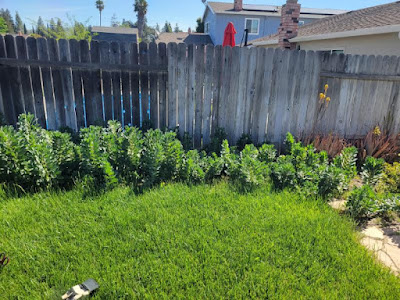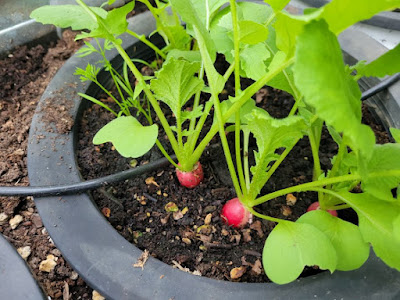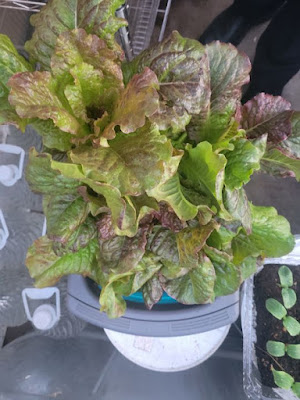There are a number of reasons why fava beans are of my very favorite crops to grow. First is that the seeds are very easy to handle. With seeds so large, they are very easy to sow and work with. The second reason is that the plants germinate relatively quickly. Within a week or two I can see the results of my planting. Third, they are relatively hardy. In northern California, they can grow primarily off of winter rains and tend to deal with pest pressure more than other cover crops. And my very favorite thing about fava beans as a cover crop is how much they improve the soil. Whether I only have a month or five months, the residue of fava beans works as fertilizer, as mulch and as compost. The fact that the beans can be consumed is just a bonus.
Here are some pictures of my “Robin Hood” Fava beans that I took in four gardens in the winter of 2022 to 2024.
The first pictures are of a garden that I started in a one yard grape bin at a friend’s house. This macro grape bin replaced a macro cubic yard bag full of high-quality compost. The majority of the growing medium in the bag was from compost.
This second group of pictures is from an above-ground garden that I established in 2020 using cinderblocks made for holding wood boards for a planter bed. They are both above-ground beds that I established in the front yard of a friend’s home.
The third group of pictures is my own little backyard plot.
And finally, the last group of fava beans was grown at the friend’s garden that I call the “Fertile Garden” because it is just that. I would really have difficulty growing what I do without access to this garden plot. The final crop of Robin Hood Fava beans that I grew was harvested in late May and was the source of much of my future seed.
Whether grown in the ground or in an above-ground planter, fava beans are a fantastic crop to grow in cool weather. If you have never grown them before, I would highly recommend it!























































































